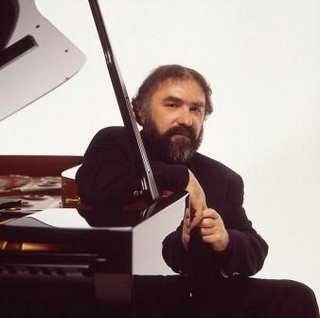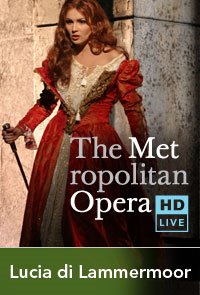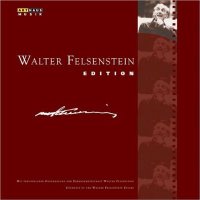This Week in Toronto (Feb.14-20)

Labels: COC Ensemble, Fidelio, Radu Lupu, Rusalka, Thais, This Week in Toronto

Labels: COC Ensemble, Fidelio, Radu Lupu, Rusalka, Thais, This Week in Toronto

 Soprano Anna Netrebko as Metropolitan Opera's Lucia di Lammermoor
Soprano Anna Netrebko as Metropolitan Opera's Lucia di LammermoorI admit arriving at the Sheppard Grande a bit disappointed at the prospect of no Rolando Villazon. But any disappointment was quickly erased the moment Beczala opened his mouth to sing. I had heard him last July in Munich as a pleasant if somewhat generic Werther. Well, as Edgardo, Beczala was spectacularly good. He sang with clarion tone, the timbre suitably Italianate, and he acted with conviction. He had excellent chemistry with Netrebko. Just to refresh my memory of him, I watched his Paris Opera Die Zauberfloete from 2001 for comparison. He sang beautifully but was too persistently loud as Tamino, so he has improved a lot over the years. His Edgardo was an altogether winning performance. As to Netrebko - having given birth just a few months earlier, she looked more zaftig than the usual Lucia. There was much nitpicking on various blogs about her singing of Lucia. Her assumption of this role in Munich Opera a couple of seasons ago was met with very lukewarm press. But I feel on this Saturday afternoon, she rose to the challenge as Lucia, singing with rich, refulgent tone, hitting all the high notes, including an excellent E-flat at the end of the Mad Scene, while ducking the first one. She can still do justice to this role, although for how much longer it is anyone's guess. The voice has gotten bigger, heavier, and less flexible. Her trill, never her forte, is no longer true, and her scale work is approximate. In a few years, I can imagine that she could be a very credible Manon Lescaut or Tosca. Interpretively that's a different story. Dramatically she is a good Lucia but not a great one. Simply put, she does not embody the character; she is too healthy-looking and not sufficiently unhinged to make you really believe her. Unlike Natalie Dessay who is utterly convincing, with Netrebko, one gets the feeling here is a soprano impersonating the mad Lucy on this particular afternoon.
The rest of the cast was strong. Polish baritone Marius Kwiecien is a youthful Enrico. He sang well although he pushed his compact-sized baritone dangerously. Also impressive was bass Ildar Abdrazakov as Raimondo. Fast-rising South African tenor Colin Lee was wasted in the small role of Arturo - let's hope he will be given bigger assignments at the Met. Only the dry and aging tenor of Michael Myers as Normanno disappointed. The atmospheric sets by Mary Zimmerman evokes the Scottish countryside. The colours are deliberately muted, recalling scenes from old English movies. Her stage direction is very middle-of-the-road and generic, nothing controversial, but just interesting enough to hold one's interest. The only misfire is to have Lucia's ghost appear at the end of the opera, physically helping Edgardo kill himself with the dagger - how hokey can you get! The host this time around was Natalie Dessay, whose English markedly improved since her last appearance, although she was hopelessly tied to her cue cards. The endlessly fascinating scene changes at intermission were almost as good as the opera itself. Marco Armiliato, now more or less a fixture at the Met, conducted stylishly if rather slowly. This Lucia, with two intermissions, stretched to almost four hours.
I was in Cinema #3 at the Sheppard Grande, and the transmission was once again near-flawless, with only a couple of split-second freezing of the picture. However, the sound coming from one of the speakers on the left wall (when facing the screen) in the middle of the cinema was distorted at high volume - it needs to be fixed before the next showing. Another problem had been the concession stand, which was always crowded and slow-moving. This time, a separate station selling regular coffee and sandwiches was set up in another location, easing the traffic greatly - kudos to the managment for listening to the customers. This is why for me the Sheppard Grande continues to be the theatre of choice when it comes to Met in HD. For those interested in catching Thais, an encore presentation is this coming Saturday. The next new show - Puccini's Madama Butterfly - is slated for March 7 at 1 pm.
Labels: Anna Netrebko, Lucia di Lammermoor, Met in HD, Piotr Beczala
 Mozart: Don Giovanni (1966), Die Hochzeit des Figaro (1976), Beethoven: Fidelio (1956), Offenbach: Hoffmanns Erzählungen (1970), Ritter Blaubart (1973), Verdi: Otello (1969), Janáček: Das schlaue Füchslein (1965)
Mozart: Don Giovanni (1966), Die Hochzeit des Figaro (1976), Beethoven: Fidelio (1956), Offenbach: Hoffmanns Erzählungen (1970), Ritter Blaubart (1973), Verdi: Otello (1969), Janáček: Das schlaue Füchslein (1965)Labels: dvd, english, opera, product_review, Walter Felsenstein
It's all over, bar the paper shuffling.
In response to my column last week, the Universal Music Group issued a statement confirming
that Decca's crossover output will be absorbed into the parent company's UCJ. It maintains that the label itself will remain 'active' and that London will continue to be its 'creative centre'. It names this process 'realignment', which I shall promptly add to my growing lexicon of recession-era synonyms for corporate elimination.
The facts are simple. Without crossover, Decca is dead. Its pop side has been defunct for years and its few extant classical artists - Renee Fleming, Julia Fischer, Erwin Schrott - are being shunted over to Universal's other property, Deutsche Grammophon.
Conversations with staff members suggest that all that will remain is an office front, one desk-jockey without a budget and a PA to answer the phone. A helpful cross-poster from the classical music forum brightcecilia comes up with much the same conclusion.
The death of Decca may be inevitable in present economic circumstances and it is certainly very sad. But, by covering up with factoids, euphemisms and simulations of continuing life, the bonus-seekers at Universal merely sustain the corporate make-believe that brought Decca to its knees in the first place. Some day Universal's head of classics and jazz will be called to account for demolishing a sub-culture by a thousand cuts over a dozen years. Maybe Georg Solti will come back to haunt the vandals from his Hungarian resting-place. Or Pavarotti's ghost will rise to sit on them. He knows where they live.
Source: Artsjournal
Labels: Anne-Sophie Mutter, Montreal, violin